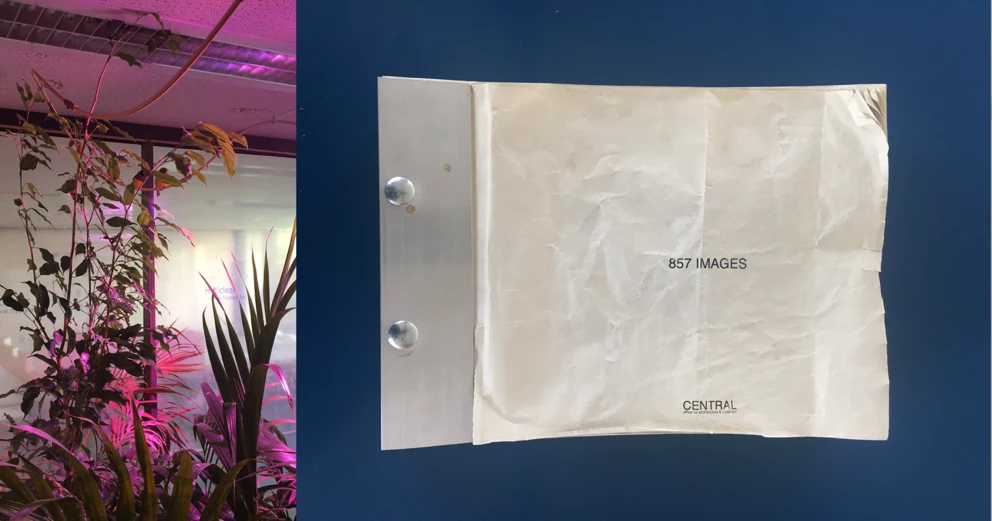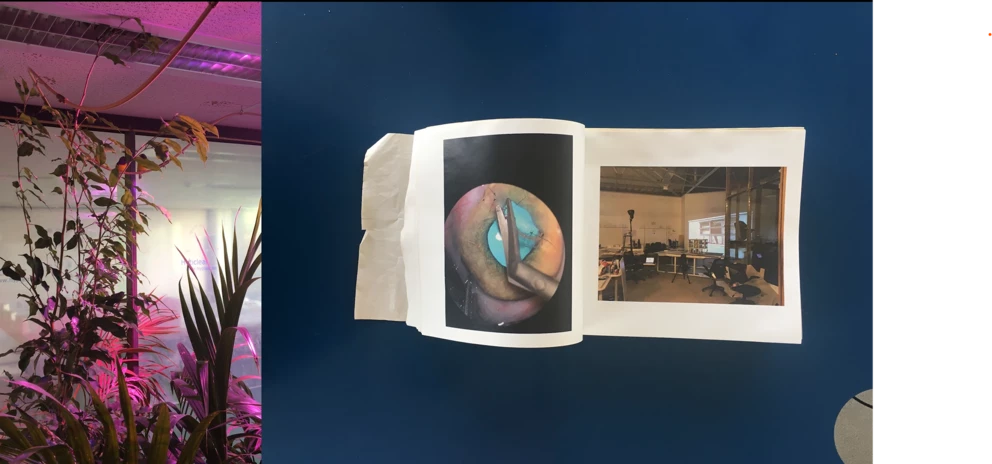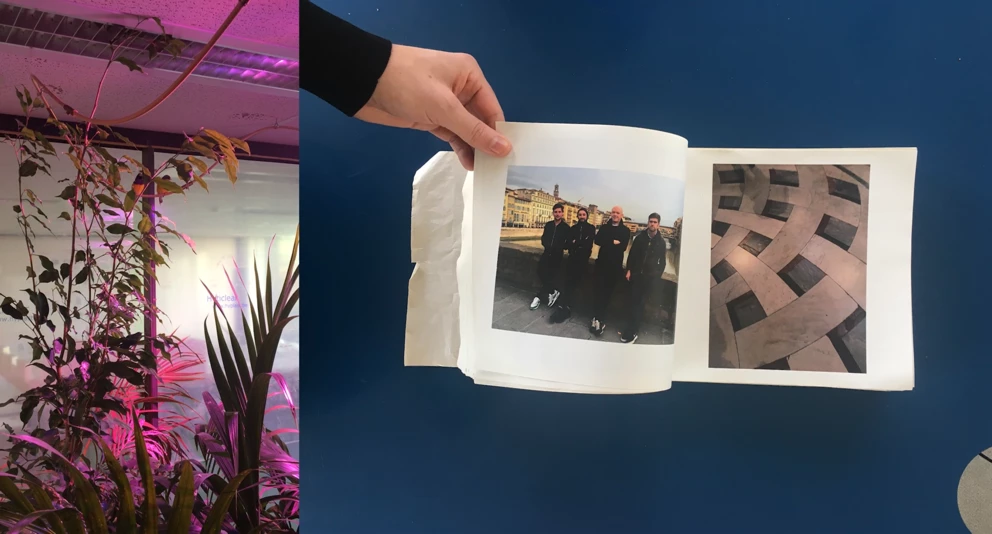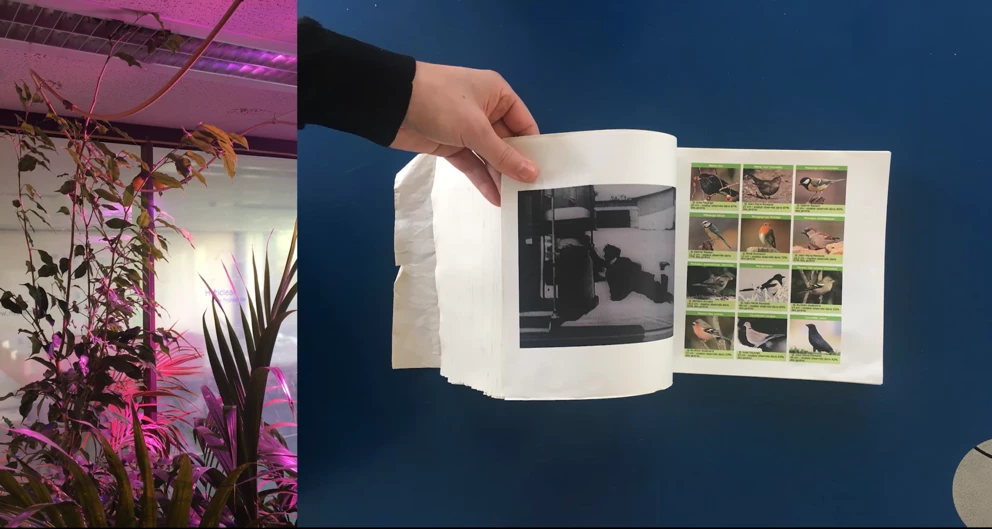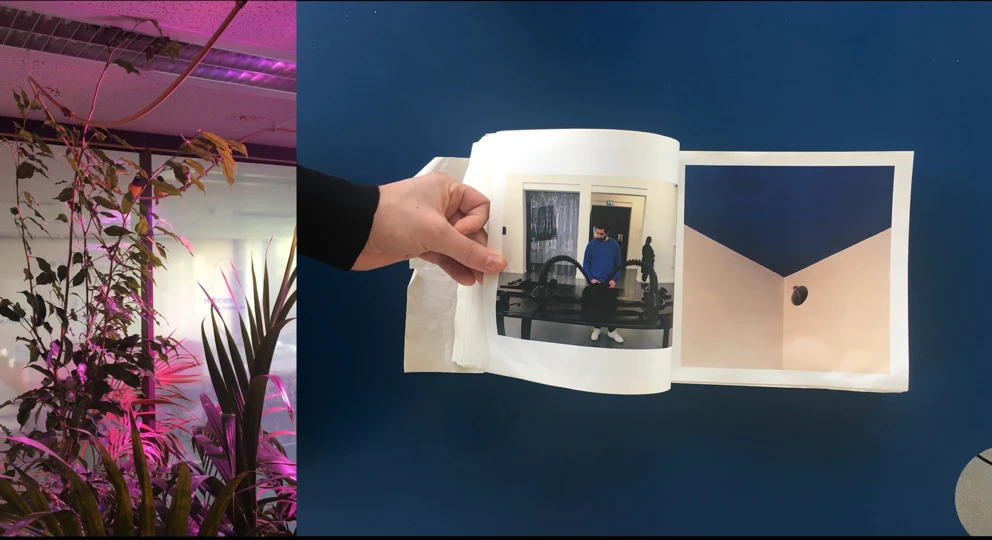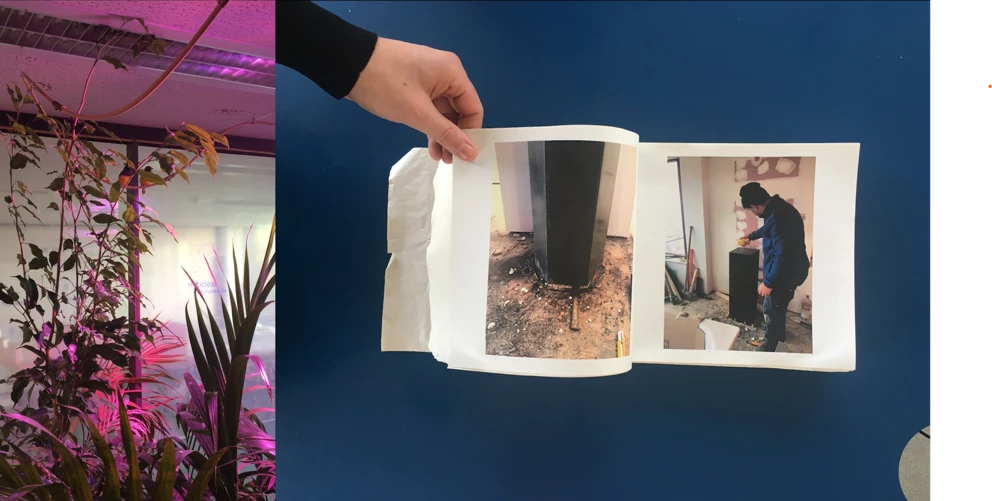857 images
857 images
The joy of Wiesbaden
Eight hundred and fifty-seven images, no more and no less. While this is a very precise number, it is not at all precise. Together, these images make up a book or, better still, a block of images. In the recent tradition of the brick book, CENTRAL has prematurely provided its own version. Tinkered and charming, a model of a book that will never happen. And somewhere in the middle of the book: Rem Koolhaas, the forerunner of the fat book, who interrupts the flow of images with his sceptical gaze. But scepticism does not bother CENTRAL. On the contrary: the series of images is cheerful and casual. Historical references to different eras alternate with found situations, work-in-progress models, screenshots, beautiful drawings by Eva Le Roi, various props, diagrams, annotated plans, photos that look like they come from a boy band on tour... All explicitly mixed together like a deranged Instagram or a totally unthemed Pinterest. In contrast to the mastery and control that is usually imposed in the architectural world (especially when it comes to one's own image), one would think that in this case, the choice of idiom has yet to be made. The first impression is that CENTRAL is searching for something and doesn't really care if you notice. This is not disarming, far from it; on the contrary! What is shown here is an explicit choice - a choice of coherence that wants to appear incoherent. A relationship that is created by a careful association of differences, or by the explicit destabilisation of a single, measured point of view. The fact that CENTRAL is made up of four different characters is no coincidence: it is an essential element of an approach that questions and sharpens reality by any means necessary. We all know that reality is not constructed from a single logic and cannot be understood from a single angle. If reality is multiple, architecture can be too - complex, eccentric and mobile. Less concerned with what it is than with what it does and implies. This attitude appears in many of the 857 images in the book. Their multiplicity is proof that this is no accident. Sometimes it is presented in a playful way, like the snake that eats an elephant and thus becomes a dinosaur. Sometimes it's through a reference to design, with Martino Gamper's recomposed chairs. Or through a found situation: a photo of almost naked men waiting for the train in swimming costumes. These are all examples of how completely logical events lead to surprising results and situations that deserve to be evaluated on their own merits. CENTRAL is clearly guided by the desire not to search unnecessarily for an ideal coherence, but to accept the apparent absurdity of reality and the potential it contains. Of all the images in the book, only one is from an architecture book: Collage City by Colin Rowe and Fred Koetter. As a statement, this may count. This book, originally published in 1978, is no longer really up to date or fashionable. But it can also be read as a programme statement: CENTRAL advocates an architecture and urbanism that does not allow itself to be led astray by a desire for an 'ideal total concept that solves everything in a jiffy' and instead seeks what Rowe and Koetter call the 'middle ground'. By this they mean interventions at the level of what exists, between the ideal solution and ad hoc bricolage, that are contemporary, effective and flexible. This is reflected in the title of the book: Collage City. These interventions, also described as types or prototypes, could indeed be the titles of some CENTRAL projects: Stabilizers, Splendid public Terraces, or Nostalgia-producing instruments. CENTRAL has fully absorbed this book and is putting it into practice with enthusiasm. And it is precisely here that something else appears, which goes beyond the book and stretches the reflection until it threatens to break. It is interesting that they do not only use the book cover as a summary of a philosophy. They also use the cover drawing a second time as a stand-alone illustration. And this image is indicative of what CENTRAL is all about. It is a figure-ground plan of the city of Wiesbaden, which is a conglomeration of different radical urbanisation processes. By taking up this image of great intrinsic graphic strength, they no longer make it merely an example of how incoherent reality can be elucidated, but an image of how a project could be realised. Here, the aim is no longer to imagine a coherent intervention within a reality full of contrasts, but to go one step further: to make projects that themselves generate several simultaneous logics and that, in so doing, are themselves full of contrasts, joyful and vital. The book with eight hundred and fifty-seven images can therefore be understood as a thesis and as a starting point. The CENTRAL experiment is a promising quest that has just begun and is likely to last for several more years.
Freek Persyn
51N4E
- Reference
- PU-0002
- Year
- 2016
